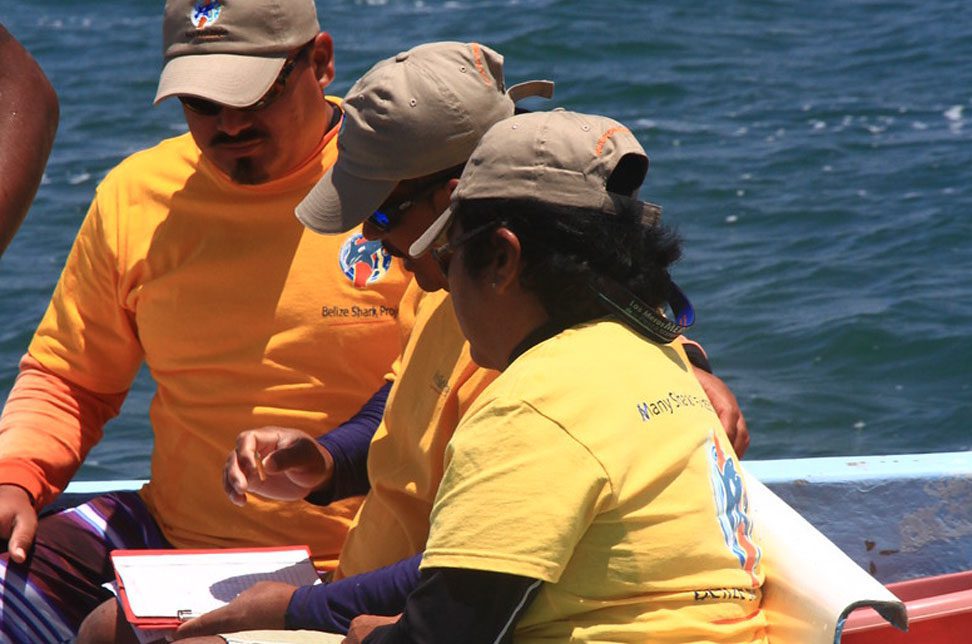Restoring Science, Community Engagement, and Marine Tourism at the Gladden Spit and Silk Cayes Marine Reserve

This MarAlliance led project aims to establish contemporary knowledge of large and commercially important fish, and develop a basis for scientifically informed and community-based marine wildlife encounter tourism in Belize by focusing on one of Belize’s iconic fish spawning aggregations (FSA) sites, Gladden Spit. The project will focus on four components that include inclusive monitoring, […]
Honduras campaign

Lend Your Voice to Sharks Ask us why. Objective of our campaign: To raise awareness and teach people the importance of sharks and rays in marine ecosystems. Our goal is for people to empathize with marine fauna and, above all, to ensure that you, the public, want to learn more about these animals and the […]
Mechanisms for participatory decision-making

Creating mechanisms that enable decision-making with key stakeholders involved such as participatory committees with strong Government engagement is critical to enabling marine wildlife issues to be tabled during management and policy decision-making. MarAlliance holds a seat on a range of national committees for sites and species including founding three National Shark Advisory Committees. We are […]
Creating marine wildlife ambassadors

Helping the public to adapt their mindset to reduced marine resources, support smart and sustainable seafood consumption underpin marine conservation efforts and give a greater Voice to Big fish. MarAlliance engages the public regularly through public events, TV, presentations and social media (Facebook pages: MarAlliance, Belize Shark Project, MarAlliance Cabo Verde, Tiburones de Honduras, Tiburones de Cuba) to curry support […]
Children of the Sea

Our children are the future stewards of nature. To engage and empower them to become fearless champions of marine wildlife we created the Children of the Sea program. We introduce local children to sharks and rays through classroom and field experiences to help them to understand the animal’s importance for the ecosystem while dispelling fears […]
Other capacity-building courses

Knowing how to analyse and interpret your data in a standardized manner and getting your results and conservation messages out loud and clear are key to conservation success. To support common conservation goals and empower our partners to analyse data they collect we created and hosted a two week international data analysis/modeling/ interpretation workshop for […]
Marine megafauna monitoring courses

Empowering the next generations is key to creating decision-makers who care for the sea. To date, we have trained over 460 primary, high-school and university students in 1-4-day hands-on field courses. The training included topics on fisheries-independent megafauna monitoring techniques for sharks, rays, and turtles. The longer field courses included longline preparation, deployment, animal handling, […]
Empowering partners to engage in science and conservation

MarAlliance trains and works with local traditional fishers, conservation and marine protected area partners and students when conducting research and monitoring activities and subsequently supports their training of other similar groups. This horizontal approach to training supports the use of standardized and replicable field methods and underpins the ability to scale up both fieldwork and […]
Studying contaminants with the Institute for Integrated Research on Materials, Environment and Society (IIRMES)

Marine fishes are important sources of protein throughout the world. As fish grow and age, they will accumulate contaminants, such as heavy metals and PCBs, that can be harmful to humans if consumed in high concentrations. Large, slow growing fishes that are at the top of the food web bioaccumulate contaminants over their lifetime, and […]
Partnering for genetic science

Studying the DNA of organisms can reveal more than just their genetic code. We are working with scientists in the US and Australia to determine species identification, patterns of movement and connectivity, biodiversity, population relatedness, and spatial ecology of sharks, rays, and finfish. We collect genetic information by cutting a small piece of fin from […]
Working with the Sawfish Conservation Society

Sawfish, a family of cartilaginous fishes consisting of five species, were recently identified as the most vulnerable of all elasmobranch families. Ecologically extinct throughout most of their ranges due to overexploitation, notably through the expanded use of gillnets, sawfish are now on the brink of extinction. We work with the Sawfish Conservation Society and the […]
Marine protected areas and big fish

Marine Protected Areas (MPAs) are increasingly used as a management tool and are considered a spatial management unit used to prohibit or restrict fishing or other destructive activities within a defined area. Although selected MPAs are fully protected, prohibiting fishing or any removal of marine wildlife, others enable multiple uses including recreational or artisanal fishing […]
